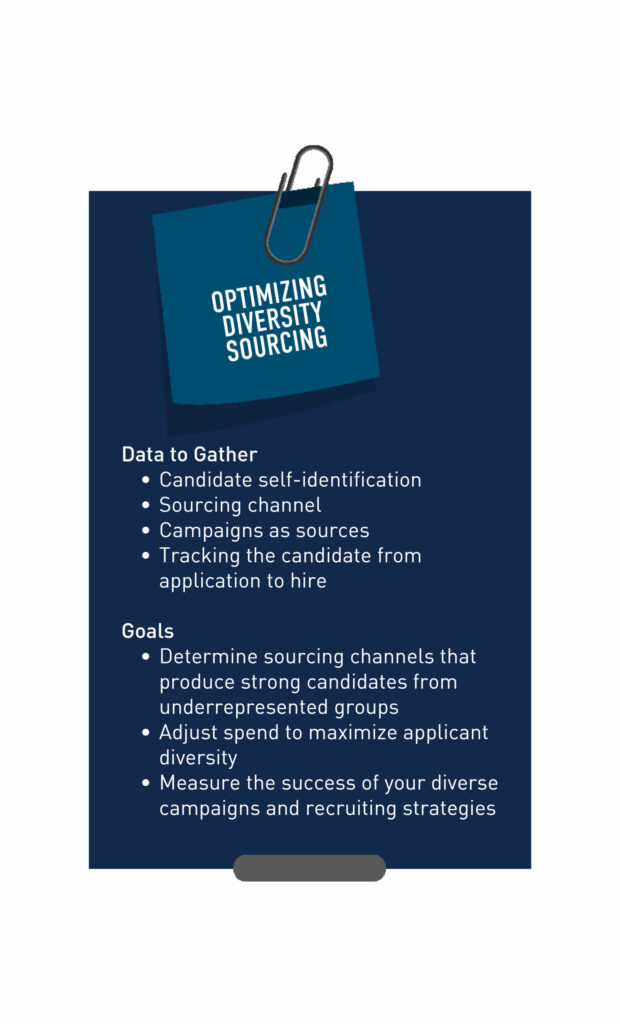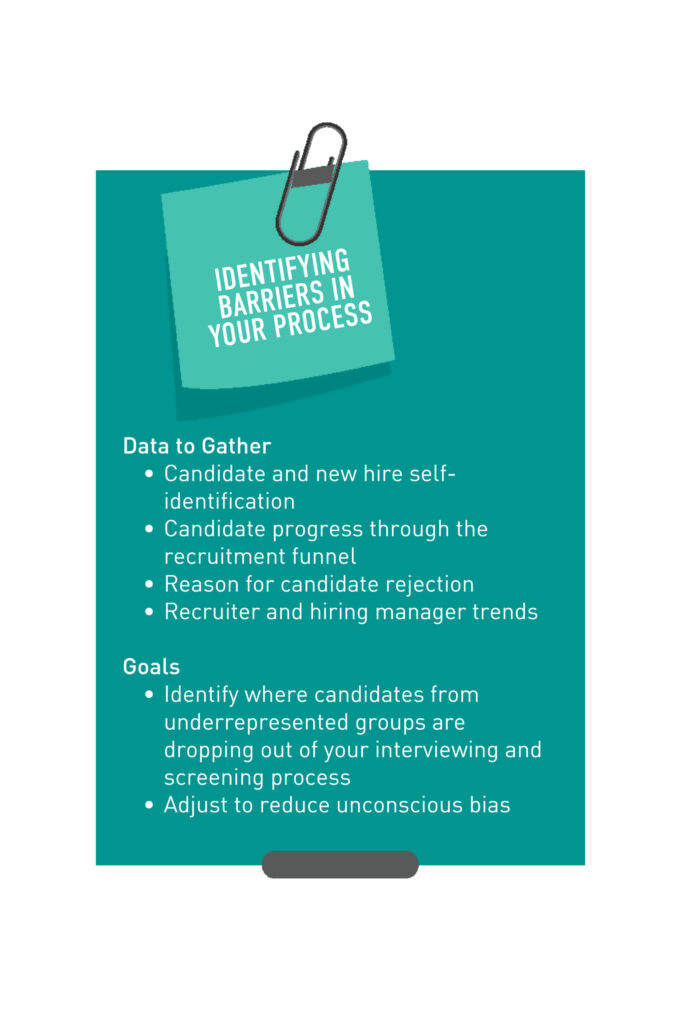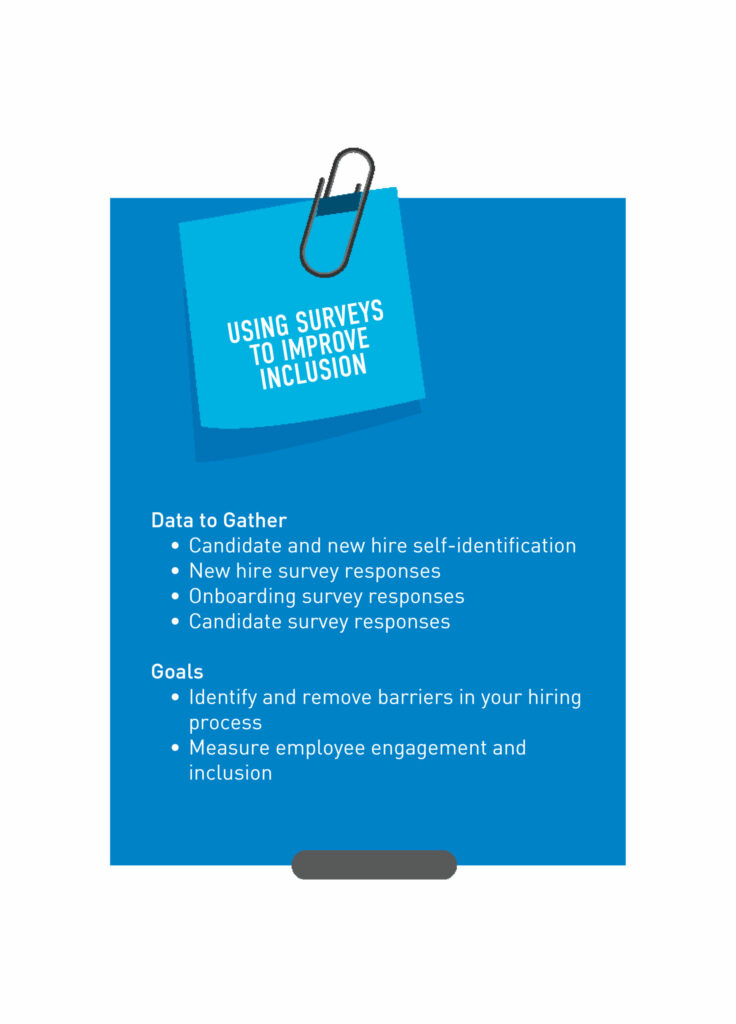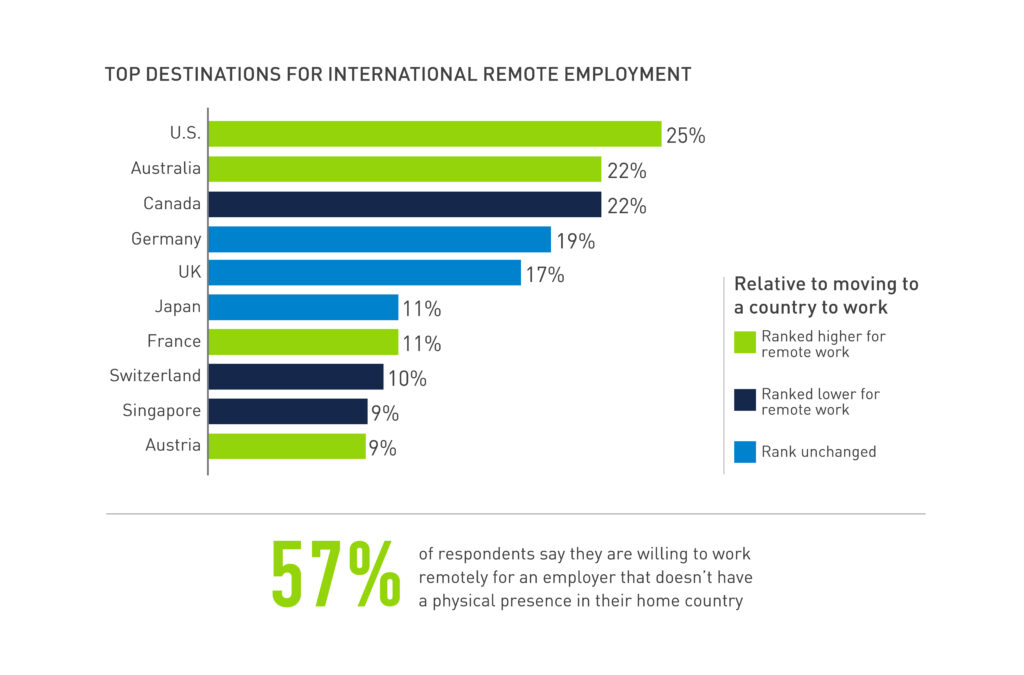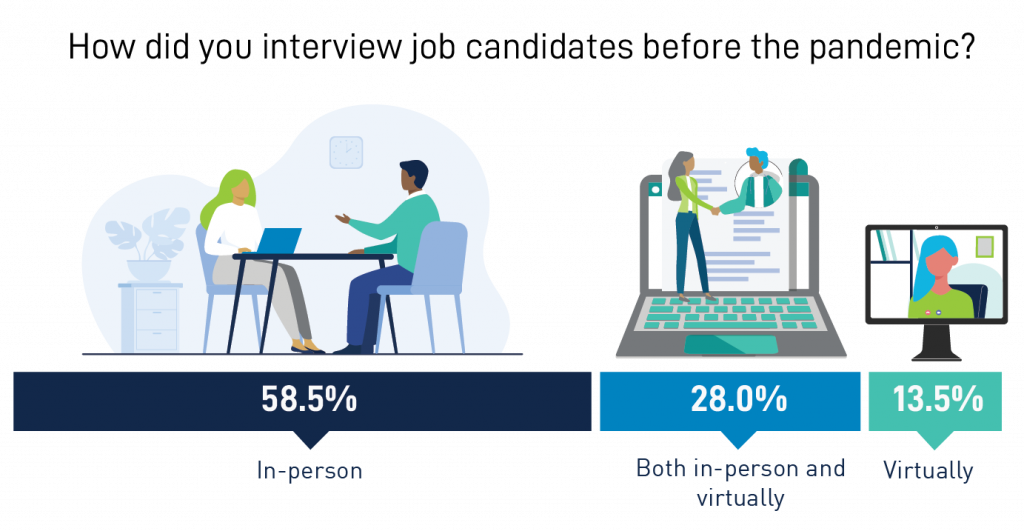As we move forward in 2021, it’s clear that safety, flexibility and a positive candidate experience are still the most critical factors in the interview process. Additionally, many talent acquisition teams are still running lean, but will see increasing hiring volumes as the COVID-19 recovery continues. Consequently, these factors necessitate an effective technology solution to support the interview process.
When the pandemic hit, many organisations fully transitioned to or increased their use of virtual interviewing technology. But now, just one year later, it’s an essential part of a long-term hiring strategy. Specifically, virtual interviewing solutions speed up the hiring process; provide a great experience for candidates and hiring managers; and save on travel budgets – in addition to the safety benefits.
So, consider this article your guide for designing the right virtual interviewing solution for your organisation and the types of roles you’re hiring for.
What is a Virtual Solution?
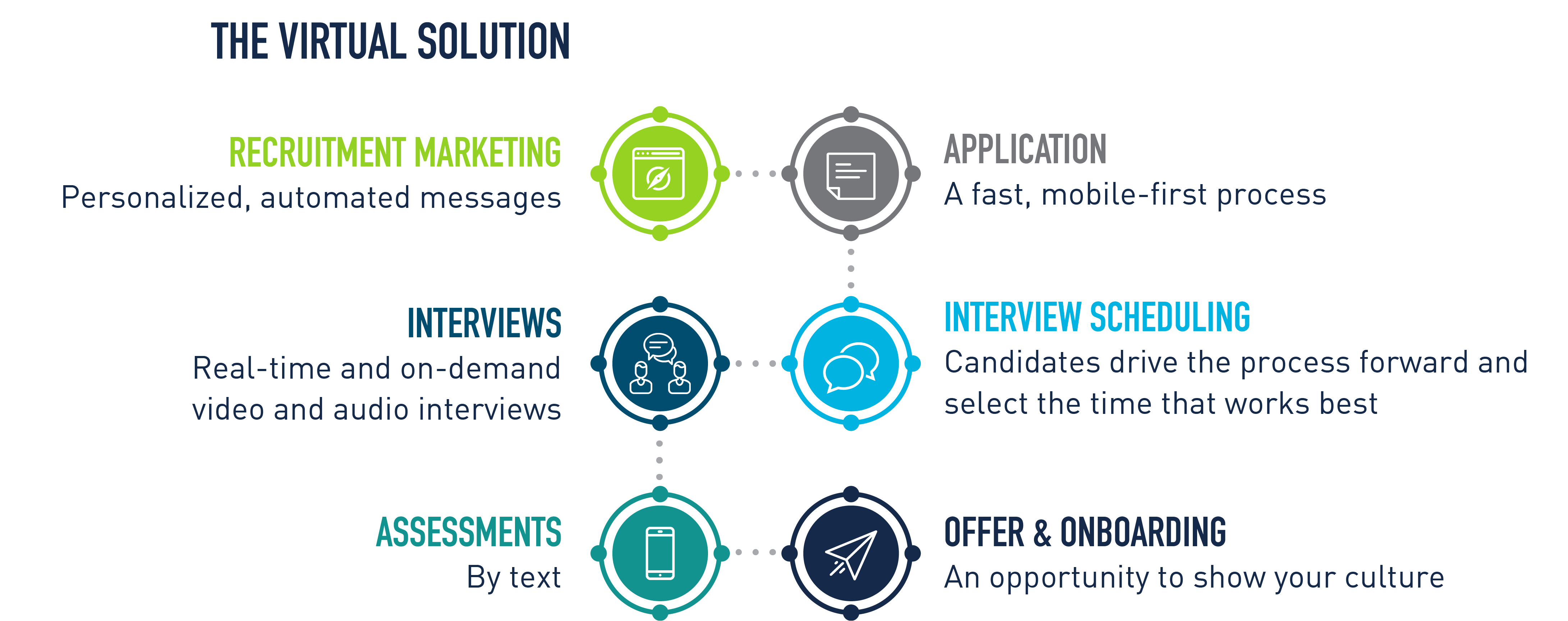
Before we focus on specific tools, it’s important to recognise where the virtual interview falls in your overall recruitment process. This graphic demonstrates an ideal virtual solution. At PeopleScout, we believe that the candidate experience should be at the core of your recruitment process, and a strong candidate experience should be part of each aspect.
In an all-encompassing virtual solution, we start with recruitment marketing. This is your opportunity to share your employer value proposition and employer branding materials with candidates. For example, you can do this virtually with a tool that allows you to send automated and personalised messages to candidates through email, social media and text messaging.
Then, candidates move to the application. Here, they expect a mobile-first process that can be completed quickly – preferably within just 10 to 15 questions. The mobile-first nature of the application is especially important as most candidates search for jobs on their smartphones and tablets. In fact, one of our clients sees more than half of applicants come in through a mobile device.
Next, consider assessment as an extension of your application or the start of your interview process. One option is to prescreen individuals via text to identify top-tier candidates. Then, candidates can drive the process forward themselves by self-scheduling their interview, which can be completed through a variety of virtual interviewing tools. All of this ends with the hiring and onboarding process.
Virtual Interviewing Tools
There are five main options for virtual interviewing technology, which can be mixed and matched depending on your organisation and the types of roles you’re hiring for.
On-Demand Text or SMS Interviews

What is it?
Candidates answer a series of yes/no, multiple choice or short-answer questions via text on their own time.
How does it work?
After completing an application, candidates receive a text message or email asking if they’d like to opt in to a text or SMS interview. Then, they’re sent a series of questions that they can answer on their own time. This process is customised and automated to move candidates quickly to the next step of the process.
What is it best for?
We recommend this option for entry-level or hourly roles. It also works well as an initial screener for high-volume roles.
Why should you consider it?
Candidates are unlikely to answer phone calls from unknown numbers – which turns an initial phone screen into a long game of phone tag. Alternatively, text interviews are quick and have high rates of completion, with some PeopleScout clients seeing completion rates as high as 80%.
On-Demand Audio Interview

What is it?
Candidates answer a series of questions by submitting audio recordings on their own time.
How does it work?
Candidates receive a link to complete the on-demand interview, in which they can respond to questions that are simply printed or recorded by the recruiter or hiring manager. Then, when the candidate is finished, they submit their answers to the recruiter for review.
What is it best for?
We recommend on-demand audio interviews for high-volume call centre roles, for example, or for positions in which candidates may be currently working in non-typical shifts.
Why should you consider it?
On-demand audio interviews provide more flexibility for both the recruiter and the candidate; there’s no need to schedule a time when the recruiter and candidate are both available.
In the current world of work, it’s even more difficult for candidates and recruiters to complete an interview during a typical 8 a.m. to 5 p.m. window. Alternatively, the on-demand audio option typically takes candidates 15 to 30 minutes to complete and takes recruiters just five to six minutes to review. At PeopleScout, our proprietary talent technology – Affinix – also allows you to calibrate your interview scoring process to ensure the right numbers of candidates make it through. On-demand interviews have a completion rate of between 40% and 60%.
On-Demand Video Interview

What is it?
Candidates answer a series of questions by submitting video recordings on their own time.
How does it work?
Similar to an on-demand audio interview, candidates receive a link to complete the interview and answer questions that are written or recorded by the recruiter or hiring manager. Then, once the candidate records their answers on video, they submit them to the recruiter for review.
What is it best for?
We recommend on-demand video interviews for roles in which candidates must demonstrate their professionalism in person, such as customer service roles or flight attendants.
Why should you consider it?
Similar to on-demand audio interviews, on-demand video interviews provide flexibility for both the recruiter and the candidate. Video interviews also allow you to see how a candidate demonstrates their professionalism “in person.” In this way, it’s an ideal choice for customer-facing roles. Much like their audio counterparts, on-demand video interviews have a completion rate of between 40% and 60%.
Live Audio Interview

What is it?
Similar to a phone interview, candidates speak directly with a recruiter or hiring manager to answer a series of questions.
How does it work?
Think of the live audio interview as a phone interview with extra features. Candidates can dial in, and hiring managers and recruiters can use a conference line to bring in either multiple candidates or a panel of interviewers. The interview can also be recorded. Plus, automated reminders can be scheduled and sent out using the tool so that no one loses the number or shows up late.
What is it best for?
We recommend this for later-stage interviews with top candidates – especially when most of their work will be completed on the phone, like call centre or virtual customer service roles.
Why should you consider it?
Compared to a traditional phone interview, you gain extra features and increased privacy for both candidates and interviewers with this option.
Live Video Interview

What is it?
A live video interview is the best replacement for an in-person interview. In this situation, candidates speak on camera with a recruiter, hiring manager or panel of interviewers.
How does it work?
A candidate receives a link to the virtual interviewing platform. With Affinix, candidates don’t have to download or install any applications; they simply click to join the interview. Recruiters and hiring managers can also programme automated reminders for interviewers and candidates.
What is it best for?
We recommend live video interviews for professional- or executive-level roles, or as a replacement for a final, in-person interview.
Why should you consider it?
With so many safety and travel concerns, live video provides a safe option for a variety of interviews that were previously in-person. In this case, the interviews can be one-on-one; with a panel of interviewers; or with a group of interviewees. Some PeopleScout clients have also used the technology for virtual job fairs. Plus, in the event of multiple participants, it also provides additional privacy protections so that candidates can’t see the contact information of other candidates, for example.
Affinix also includes chat and screen-share options, as well as the ability to record interviews. Going forward, live video interviews also provide an alternative to travel.
Interview Scheduling
While many of these options allow candidates to complete the interviews on their own time, the live options still require the process of scheduling. Fortunately, instead of the time-consuming back-and-forth, candidates can now self-schedule interviews.
An invitation to self-schedule an interview can be automated after an application or SMS interview; it can also be initiated by a recruiter. It works by allowing recruiters and hiring managers to sync their calendars with a scheduling tool or provide certain timeslots for candidates to choose from. This allows candidates to move the process forward themselves, thereby enhancing the candidate experience and saving time for the recruiter.
Putting It All Together
Depending on your organisation and the roles you’re hiring for, your virtual interview process will likely include a number of stages and tools. This graphic shows one way that these can fit together.
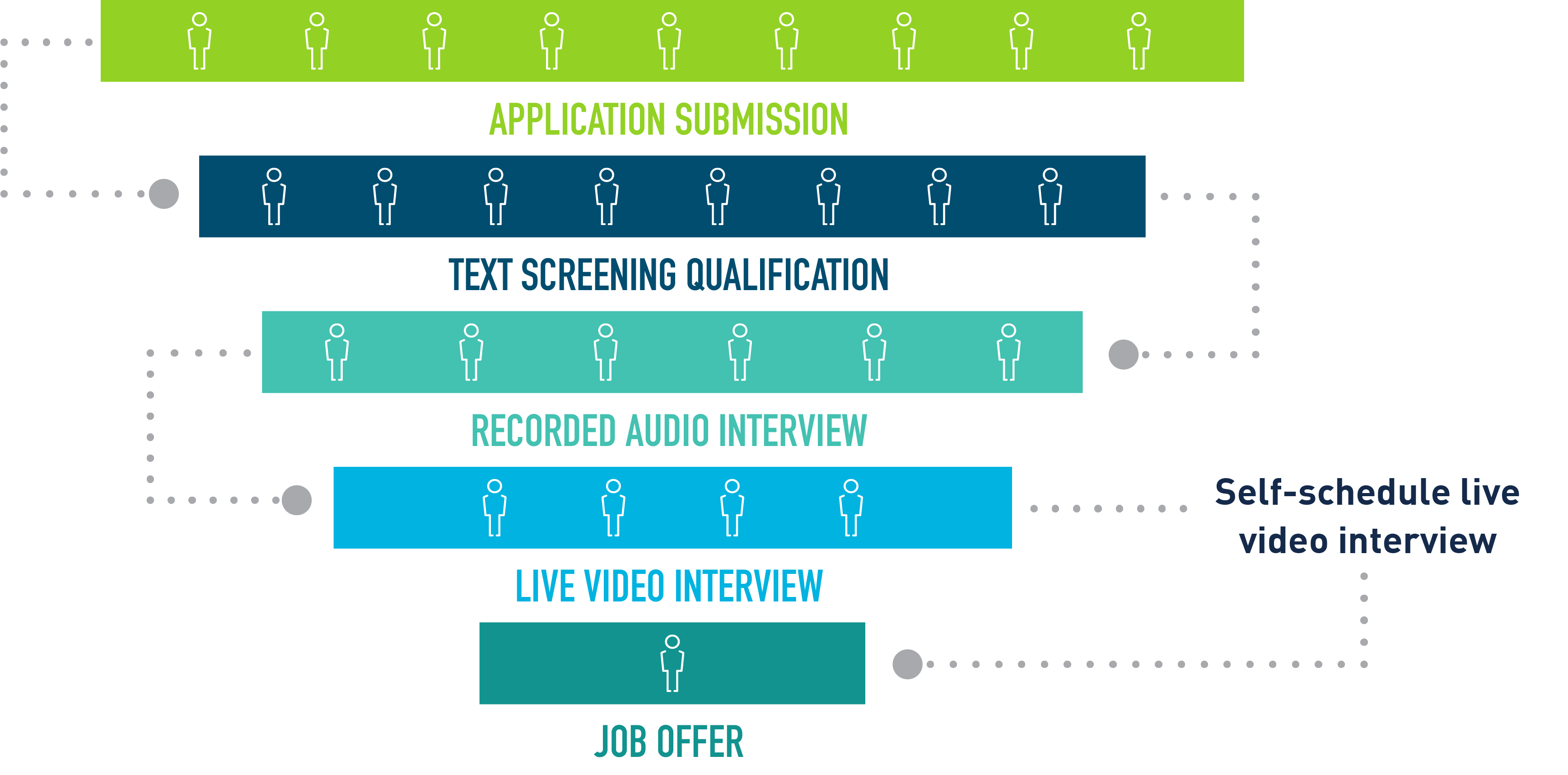
Implementing a Virtual Interview Solution
At PeopleScout, we recommend four steps for implementing a virtual interviewing solution. The process can be quick; in fact, in some cases, we can set up a virtual interviewing solution in as few as 72 hours.
- Evaluate what you need. What portions of your process are already virtual?
- Work with your RPO provider to implement the technology tools you need.
- Gather branding materials and questions you need.
- Train your hiring managers and talent acquisition team.
Once your virtual interviewing solution is up and running, it’s important to keep evaluating the process and testing to find the right workflow for your recruiters, hiring managers and candidates. In particular, your solution should meet the needs you have now, as well as evolve for the future.

